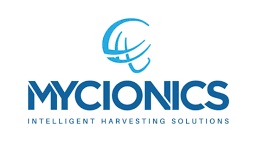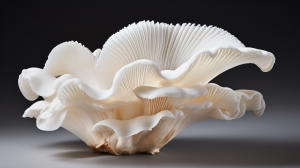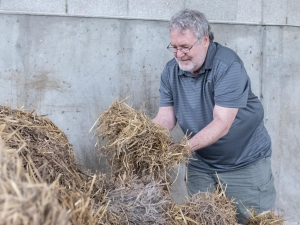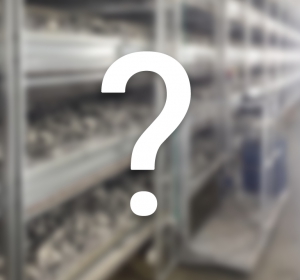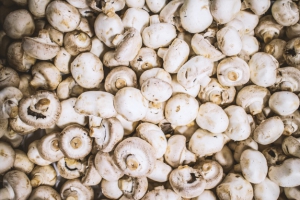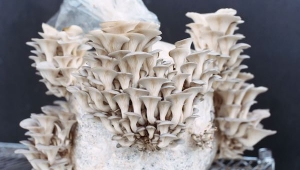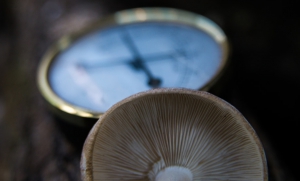The humble mushroom is quietly taking center stage in a global shift toward sustainable living, healthy eating, and circular innovation. Once considered a niche ingredient or a simple forest delicacy, fungi are now at the heart of scientific breakthroughs, environmental solutions, and a booming wellness economy.
From food to function: mushrooms go mainstream
In kitchens and cultivation facilities across the world, mushrooms have become more than a culinary delight, they’re a cornerstone of functional nutrition. The demand for lion’s mane, cordyceps, and reishi continues to grow as consumers seek natural ways to support focus, energy, and immunity. Analysts estimate the global functional mushroom market could surpass $20 billion within the decade, driven by both consumer wellness trends and research into compounds like beta-glucans and hericenones.
For mushroom growers, this trend opens new opportunities beyond traditional button or oyster cultivation. Specialty fungi command higher margins, require less land and water, and appeal to a rapidly diversifying customer base—from wellness brands to supplement formulators.
Mycelium: the root of innovation
Outside the kitchen, mycelium, the root-like network that forms the body of a fungus, is emerging as one of the most exciting biomaterials on Earth. Startups and researchers are developing mycelium-based packaging, textiles, and construction materials that rival plastics, leather, and even concrete. Unlike synthetic materials, mycelium grows naturally from agricultural waste and fully biodegrades, offering a true circular alternative.
Recent progress in Europe and North America shows mycelium composites being adopted for protective packaging, furniture, and even soundproofing panels. For the mushroom industry, these ventures create new synergies: growers can repurpose waste substrates into valuable bioproducts, closing the sustainability loop.
The Future: mushrooms as climate partners
As agriculture faces increasing pressure from climate change, fungi could play a vital role in regenerating soil health and reducing carbon emissions. Mycorrhizal fungi, those that form symbiotic relationships with plant roots—enhance soil structure, boost nutrient uptake, and lock away carbon underground. Forward-thinking farmers are exploring mushroom-integrated systems where fungi coexist with crops to improve yields and biodiversity.
Meanwhile, food innovators are experimenting with mycoprotein-based meat alternatives that deliver both nutrition and sustainability, requiring a fraction of the water and land of traditional livestock.
The bottom line
From the lab to the forest, and from the farm to the factory, fungi are rewriting what’s possible in food, health, and materials science. For mushroom farmers and industry professionals, the message is clear: we are not just growing mushrooms, we are cultivating the future.
Published by Mushroom Matter: connecting the global mushroom community through insight, innovation, and inspiration
We are very happy to announce David M. Beyer, Professor of Mushrooms, to our platform. To start, David briefly explains about his background and involvement in the mushroom industry.
For almost 45 years I have been involved in the mushroom industry, first and always as a student of mushroom science and then as a commercial mushroom grower.
I worked 12 years growing mushrooms at the largest mushroom company in Canada with a tray farm, 3 shelf farms and a Dutch-style bulk tunnel farm. As Director of Growing, I provided technical assistance and training to the growers at all 5 farms.
For the past 34 years I have worked at Penn State as the director of the mushroom extension program for the North American commercial mushroom industry. My previous commercial growing experience provides practical insight into the development and organization of my educational programs that address the changing needs of the industry.
My research program involves all aspects of mushroom growing from composting, compost nutrition for the mushroom, disease management (IPM), and cultural factors affecting mushroom yield, size, and quality. I have developed and conducted several customized grower educational programs for mushroom farms and suppliers.
For almost 45 years I have been involved in the mushroom industry, first and always as a student of mushroom science and then as a commercial mushroom grower.
I worked 12 years growing mushrooms at the largest mushroom company in Canada with a tray farm, 3 shelf farms and a Dutch-style bulk tunnel farm. As Director of Growing, I provided technical assistance and training to the growers at all 5 farms.
For the past 34 years I have worked at Penn State as the director of the mushroom extension program for the North American commercial mushroom industry. My previous commercial growing experience provides practical insight into the development and organization of my educational programs that address the changing needs of the industry.
My research program involves all aspects of mushroom growing from composting, compost nutrition for the mushroom, disease management (IPM), and cultural factors affecting mushroom yield, size, and quality. I have developed and conducted several customized grower educational programs for mushroom farms and suppliers.
Running a mushroom farm is quite a challenge. A key element of success in this industry is maximizing productivity, which translates directly into higher profits. One piece of equipment that can make a significant difference to production efficiency is a mushroom picking lorry. But which lorry should you choose? What should you pay attention to in order to make the right investment and achieve the expected results?
In the article we have prepared, you will find detailed information on the features and functions that the ideal mushroom picking lorry should have. We will discuss what materials and construction are best to ensure durability, safety and comfort. You will find out why ergonomics is so important and what modern technological solutions can help increase the efficiency of your mushroom farm.
Key aspects when choosing a mushroom picking lorry
- Speed and control – a well-designed lorry should offer a controlled and constant speed of movement, regardless of the load. This article explains why the minimum travel speed is as important as its maximum value, and how speed control can affect harvesting efficiency.
- Operation and maintenance – the ease of disassembly of drives and other lorry components is crucial for regular disinfection and hygiene maintenance. We discuss what to look out for to avoid problems with difficult access to the various parts of the lorry.
- Power system – the performance of the batteries and their impact on the running time of the lorry is another important aspect. In this article, you will find advice on how to choose a lorry with low power consumption and long operating time per charge, which will translate into greater efficiency.
- Work safety – ensure the health and safety of your employees by choosing a lorry with the right safety systems. We will outline what mechanisms should be included in a good lorry to prevent accidents and increase comfort.
GROWTIME lorries - tailor-made solutions for your mushroom farm
GROWTIME, based on years of experience, has created two innovative lorry models: the Newton and the Pascal. Each has unique features, which are described in detail in the article on our blog. In it, you will find out why the Newton model, with its electric winch, is ideal for working at different heights, while the Pascal model, with its advanced hydraulic system, provides maximum comfort and safety. Enjoy the read!
Read the full article here.
The hands that grew a brew are now raising fungus for survival in northern West Bengal. Sabitri Toppo and Mausumi Minj are among 700 plantation workers who lost their jobs when the Madhu Tea Estate in West Bengal’s Alipurduar district.
The tea estate is one of 26 in the district’s Kalchini block, many of them in a bad shape due to low yield, quality and labour issues.
“We formed a cluster of women from 50 families, some of them from the closed tea estate, and trained them in organic mushroom farming more than a fortnight ago. We also provided them a permanent mushroom-growing shed and home-delivered spawn,” Binoy Dhar, a farm specialist with the Assam-based Mushroom Development Foundation (MDF) told The Hindu from the Kalchini area.
Please read the full article here.
'As a mushroom sector to solve our own problems'
From the production of healthy food to attention to animal and plant health, from managing a beautiful and diverse landscape to contributing to a healthy economy: Limburg's farmers and horticulturists literally keep the province healthy. Today a conversation with entrepreneur Gerard Sikes from Ysselsteyn, who is well on his way to climate-neutral mushroom production.
Sikes (49) grew up on an arable farm, his wife Karin (49) on a mushroom farm. In 1988 they started cultivating mushrooms together.
'A nursery was for sale, but we could also have bought a sandwich shop or opened a bicycle shop,' says Sikes. 'What matters to us is doing business together.'
Every morning, around eight o'clock, the couple sits together at the table to discuss all current matters and the day ahead. 'A healthy relationship is the basis for our company. My wife gives feedback, is my complaint and teacher.'
Source: Nieuw Oogst (article is in Dutch)
On November 14th, Texans gained access to a new realm of the mushroom kingdom with the arrival of Smallhold’s specialty mushrooms on Central Market store shelves and the opening of their first Texas urban farm.
Breaking up a wall of brown button and portobello mushrooms with bursts of color and flavor, Smallhold’s locally grown, organic mushrooms introduce a world of previously unavailable flavors and textures to the produce aisle. For the first time, Texans will have the chance to pick up rich and nutty lion’s mane, deep cerulean oyster mushrooms and meaty royal trumpets – all grown down the road, rather than on the other side of the globe.
Please the article in full here
Source: Hortidaily | PR Team Smallhold.
Photo: Smallhold
Climate control
A good climate control is of course vital for every mushroom grower even more if you want to stand out with the quality of the mushrooms. One of the most asked question I get as consultant is: How can we get better quality and how can we keep the quality of the mushrooms good until the end of the flush? Now, of course the quality at the end of the flushes will always be less than at the start, no illusions there. But improvements are always possible and most of that you can get from an ideal climate.
Before we had more advanced climate installations with more options, we always controlled the rooms on Air temperature, Relative humidity and CO2. However, with the new systems coming on the market there is a lot more to learn than we think and controlling rooms, especially in harvest stage, on moisture deficit, inlet moisture control and even measuring systems for evaporation are used.
To understand the difference between all the systems you need to know exactly what the Mollier Diagram stands for and if you manage to run the system well you will see advantages, especially in quality of the mushrooms. The Mollier Diagram is crucial in mushroom growing and climate computers make the changes in the room based on that Diagram with the Absolute humidity (AH) as the biggest factor. Let’s me explain a little bit more about of those controls, the moisture deficit.
As we are changing air temperatures in the flushes you will see in the Mollier Diagram that that will create differences in evaporation as we change the temperature but leave the RH the same, with other words, we change the AH. By controlling on moisture deficit we will maintain a constant evaporation, what will benefit the quality of the mushrooms, no matter what the temperature differences are. The computer will calculate the right RH for the current air temperature, to keep the same evaporation in the growing room.
Moisture deficit is the difference between the current absolute humidity in the room and the maximum possible absolute humidity at the same air temperature. Once this value is constant the evaporation capacity of the air is also constant.
To use this in a practical situation of course first of all you need a climate control computer that supports the moisture deficit system and change it from RH to moisture deficit control, in the computer that will be named as Absolut humidity control. Ideally this is linked with humidity control of the inlet air to get the best benefit. The mushrooms will have a constant evaporation and that will benefit the quality as changes in evaporation will disturb their growth. The mushrooms will get less water stems and go softer in a later stage what would give an extra picking days benefiting the yield as well as quality.
I recommend to change the computer 1 day before you start harvesting the flush from RH control to moisture deficit control. When you changed the control, set the AH in the computer so that the RH is at the same level as you normally run it in the flush. So if you normally run the flush on 17.5 degrees and 89% RH, keep the air temperature the same and set the AH so that he calculates the 89% RH as set point. Keep 0.2 difference between minimum and maximum AH. From that moment forward you let the computer calculate the right RH and change the air temperatures as you normally do, until the end of the flush. After the flush put the system back to RH control.
The only way to find out is try other controls to improve quality. Many option are out there and based on results on other farms worth trying. If you start and are seeing any improvement? Learn more and keep doing trials, good luck.
Erik de Groot
This email address is being protected from spambots. You need JavaScript enabled to view it.
Mario (Chuff) D. Basciani, a mushroom industry pioneer whose work ethic, tenacity and passion for mushrooms made him a role model to farmers throughout the country, died Sunday, Sept. 13, surrounded by his loving family. He was 91.
Mr. Basciani was a second-generation mushroom farmer, founder of Basciani Foods Inc., and patriarch of the Basciani family. He is survived by his wife of over 70 years, Anna, his five children, 18 grandchildren, and 40 great-grandchildren.
Mr. Basciani was born Jan. 20, 1929 in Toughkenamon, PA, to Italian immigrants Emedio and Anna Basciani. His father started harvesting mushrooms for the Pratt family in 1915, until he established his own farm in 1925. Mr. Basciani began working on the family farm at a young age and fell in love with all aspects of the business, especially the challenging physical work that comes with cultivating mushrooms.
Read the full article here.
Source: The Produce News






